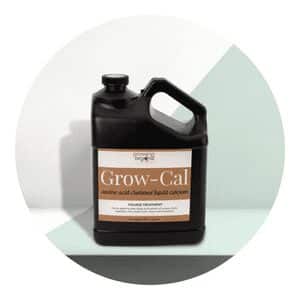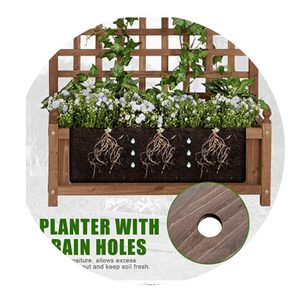The Best Way to Grow Arugula
Organic gardening is becoming increasingly popular for both novice and experienced gardeners alike.
Arugula, also known as rocket, is one of the best choices for those who want to experience the benefits of organic gardening.
Not only is it easy to grow, but it also has a delicious, nutrient-rich flavor that can be added to salads or eaten on its own.
Table of Contents
Arugula and why it's a great crop for organic gardening.
Arugula is a green leafy vegetable with a unique peppery flavor.
It’s part of the brassica family, which also includes broccoli and kale.
Arugula is best grown in cool weather, making it one of the most popular early spring crops for organic gardeners.
It’s fast-growing and ready to harvest in around four weeks after planting.
Organic gardening is a great way to grow arugula because it allows you to control the soil conditions and eliminate any potential issues with synthetic pesticides or fertilizers.
You can use compost or other organic amendments to improve fertility and increase water retention in the soil.
This will make it easier for your plants to thrive while still providing plenty of nutrition for your crop of arugula.
In addition to its quick growth rate, another advantage of growing arugula organically is that you can enjoy its unique flavor without worrying about potential contaminants from chemical pesticides or fertilizers that may be found on conventionally grown produce.
With proper care and attention, organic arugula can provide an abundance of fresh greens for salads, sandwiches, soups, pastas, pizzas and more!
Soil-Based Organic Gardening
Organic soil is an essential part of creating a successful organic garden. It is important to use organic soil because it contains natural nutrients that are needed for plants to grow and thrive.
Organic soils also contain beneficial microbes and fungi that help create healthy, fertile soil.
Additionally, using organic soil helps reduce the amount of synthetic pesticides and fertilizers used in gardening.
Preparing the organic soil for arugula can be done by first testing the pH levels of the existing soil.
Arugula prefers slightly acidic or neutral soils so if your tests reveal that the pH level is too high or too low some amendments may need to be added to bring it within an acceptable range.
Once this has been done, adding composted manure, mushroom compost, or peat moss can help improve water retention capability and increase nutrient levels in the soil.
Before planting arugula it is important to test your organic soil regularly with a home test kit in order to monitor nutrient levels such as phosphorous, potassium, magnesium and iron as well as pH levels.
This will ensure you are providing optimal conditions for growing arugula successfully.
If your tests reveal any deficiencies then you can amend them by adding appropriate fertilizer products such as fish emulsion or sea kelp which provide essential micro-nutrients without introducing chemicals into your garden environment.
Organic Fertilizer
Organic fertilizers are better for the environment and the health of arugula plants because organic materials break down slowly over time, releasing essential nutrients into the soil without causing any toxic buildup.
This ensures that plants receive adequate nourishment while also avoiding pollutants from synthetic chemicals that can harm the soil, water sources, and wildlife.
Organic fertilizers are also more sustainable than their chemical counterparts since they don’t require additional energy to produce or transport. Lastly, organic fertilizers are rich in microorganisms that help to aerate soil and support root growth.
Organic fertilizers come in many different forms including composted manure, aged plant material (such as leaves), animal by-products (like fish emulsion), rock dusts (like basalt) and seaweed extracts.
Composted manure is especially beneficial to arugula because it contains a balance of macro-nutrients like nitrogen, phosphorus and potassium which helps with nutrient uptake in plants.
Aged plant material provides a slow release of nitrogen which assists with photosynthesis in arugula plants; whereas animal by-products provide phosphorus which promotes natural flowering and fruiting processes.
Rock dusts are made up of trace minerals such as calcium, magnesium and iron; while seaweed extracts offer high levels of potassium which helps with disease resistance.
Hydroponic Organic Gardening
Hydroponic gardening is a great option for growing arugula, as it is an easy, efficient and space-saving way to grow fresh produce indoors.
Hydroponics works by suspending the plants in a nutrient-rich water solution; this allows the roots to take in oxygen, nutrients and moisture directly from the water.
This method of gardening eliminates the need for soil and allows you to control the environment with greater precision than traditional soil gardening.
When setting up a hydroponic system, there are several things to consider such as light sources, types of nutrients and pH levels. Utilizing LED lights can save energy while still providing enough light for healthy plant growth.
For hydroponic systems that use nutrient solution instead of soil, special fertilizers should be used that contain essential micronutrients like iron or zinc.
The pH level should also be monitored—the optimal range for arugula is 5.5 – 6.5—and adjusted accordingly with a pH meter or test strips if necessary.
Overall, hydroponics has many benefits when it comes to growing arugula: it requires less maintenance than traditional soil gardening; it provides better access to oxygen and nutrients; and it takes up less space than traditional garden beds while still producing high yields of fresh produce year round!
The leaves of green glisten in the sun, Arugula grows best when it's done right. It needs enough water but not to excess, A brilliant garden companion to blessed. From its spicy leaves one can learn, To cool a dish on a hot day will turn. For Arugula just sow and let be, Yield it shall with rich nutrition and glee.
Chappy The Gardener
Aquaponic Organic Gardening
Aquaponic organic gardening is a unique way of growing plants in a symbiotic relationship with fish.
It combines the principles of fish farming and hydroponics to create a closed-loop system that sustains itself without the need for any external fertilizers or additives.
In this system, nutrient-rich water from the fish tank is pumped into the beds where vegetables are grown, providing them with natural nutrients while also cleaning and oxygenating the water which is then returned to the tank.
This results in plants that are healthier and more resistant to pests and disease due to their natural nutrition.
When setting up an aquaponic system, it’s important to find a balance between selecting appropriate fish for your environment and choosing compatible plants for your setup.
Considerations should be made for temperature stability, pH balance, light requirements, plant nutrient needs as well as filtration systems and aeration equipment needed by both components of your aquaponic system.
Additionally, you will want to have regular maintenance routines such as testing your water quality levels on a regular basis so you know when adjustments need to be made in order for both parts of your closed-loop system to remain healthy.
Raised Bed Organic Gardening
Arugula, also known as rocket, is an incredibly versatile and nutritious vegetable that thrives in organic soil.
Raised beds are the ideal way to grow arugula organically because they offer superior drainage for the roots of the plants and a better growing environment overall.
Additionally, raised beds provide more control of soil temperature, moisture levels, and quality of soil than traditional in-ground gardening methods.
When building a raised bed for arugula organically, be sure to select untreated wood or other natural materials for your frame.
You will also want to fill it with organic compost and topsoil; this will ensure that your plants get all the nutrients they need without any chemicals or additives from synthetic fertilizer.
For optimal growth, you should mix in some leaf mold or aged manure with your soil mixture as well as adding some sand if necessary.
Finally, make sure that you water regularly but not too often – aim for moist but not soggy soil at all times!
To maintain healthy soils over time when planting arugula in raised beds organically, it’s important to test your pH levels regularly and add compost each year to replace nutrients lost through harvesting fruits and vegetables.
Additionally, mulching can help retain moisture while preventing weeds from taking over your garden space.
When done correctly these steps can help ensure excellent harvests year after year with minimal effort required!
Greenhouse Organic Gardening
A greenhouse can be a great way to extend the growing season for arugula and protect it from pests and diseases.
In a greenhouse, you can control the temperature, humidity, sunlight and other environmental factors that allow you to grow crops throughout the year.
Arugula is an ideal crop for a greenhouse because it is highly sensitive to cold temperatures and will not survive in frosty conditions.
The controlled environment of a greenhouse allows for greater protection against extreme weather fluctuations, as well as pests and diseases.
When growing arugula in a greenhouse it is important to keep the temperature between 50-60F (10-15C), with 80% humidity.
You can also manage light levels by using blackout screens or curtains which will prevent overheating during hot summer days while still providing plenty of sunlight through transparent panels or plastic sheeting.
Additionally, make sure your greenhouse has adequate ventilation so that air can circulate properly and reduce disease risk caused by stagnant air conditions.
Finally, consider adding companion plants such as marigolds to help deter aphids which are common pests of arugula crops.
Also use mulch around the base of plants to help retain soil moisture while keeping weed growth under control – both essential requirements for healthy organic gardening practices within greenhouses!
Organic Pest Control
Companion planting is an effective way to naturally control pests in arugula gardens.
Planting a combination of herbs and flowers such as basil, chamomile, coriander, dill, and marigolds can help keep away unwanted insects.
These plants have strong aromas that can repel certain bugs and attract beneficial predator insects like ladybugs which feed on aphids that may damage the arugula leaves.
Organic pesticides are another option for controlling pests in an organic garden.
Common things like garlic or chili powder can be used to make homemade sprays that will deter certain types of insects from nibbling on your crop.
Neem oil is also an effective natural pesticide; it works by smothering soft-bodied insect eggs and larvae so they don’t grow into adults.
It should be noted, however, that neem oil does not discriminate between beneficial and harmful insects so you should always be sure to apply it carefully according to directions.
Finally, keeping the area around your arugula clean will go a long way towards pest prevention as well.
Make sure you remove any weeds or debris where insects may hide or lay eggs; this is especially important during the autumn months when arugula is at its peak growth stage.
Harvesting Arugula
Arugula is a cool-weather plant that is best harvested when the leaves are young and tender. For the most flavorful and textured arugula, wait to harvest until after two or three true leaves form. Cut the mature leaves at the base of the stem using scissors or a sharp knife.
If harvesting larger-leaved varieties, cut as close to the crown as possible so that future regrowth can occur.
When harvesting arugula, it is important to be mindful of where you have already harvested from in order to evenly distribute growth throughout your garden bed.
Picking individual outer leaves can also help conserve additional nutrients in the soil for future use.
Additionally, water your plants well before harvesting so that they are hydrated and ready for consumption. This will ensure better flavor and texture in your harvest.
Preserving arugula for later use is relatively simple; simply blanch it by dropping into boiling water for 30 seconds then immediately transfer it into an ice bath to stop cooking process.
Once cooled off, transfer onto a baking sheet lined with paper towels and freeze overnight on a flat surface like a baking sheet covered with parchment paper – make sure not to overcrowd them! Afterwards, store frozen arugula in airtight containers or bags for extended shelf life up to about 6 months!
Organic Recipes
Arugula is a versatile vegetable that is packed with nutrition and flavor.
It has a unique, slightly peppery flavor that adds complexity to any dish.
Here are some delicious organic recipes featuring arugula for you to try:
Salads: One of the best ways to enjoy arugula is in a salad.
Try making an Italian-style Arugula Salad with cherry tomatoes, black olives, shaved parmesan cheese, and small cubes of mozzarella or bocconcini.
For the dressing, use olive oil combined with freshly squeezed lemon juice and oregano!
Pastas: Arugula makes a great addition to pasta dishes too!
One recipe you can make is linguine with garlic sautéed mushrooms and arugula pesto.
Simply cook the linguine according to package instructions then toss it in the pesto made from fresh basil leaves, pine nuts, olive oil, Parmesan cheese and freshly ground black pepper.
Sandwiches: If you’re looking for something easy yet flavorful for lunchtime sandwiches, try adding some fresh arugula leaves to your favorite sandwich filling ingredients like thinly sliced ham or turkey breast slices; roasted red peppers; scrambled egg whites; provolone cheese; Dijon mustard; mayonnaise; kalamata olives ; tomato slices ; onions ; cucumber slices ; lettuce leaves .
In conclusion, growing arugula at home is a rewarding experience. It is easy to grow, and can be grown both indoors and outdoors.
With proper care and attention, you can enjoy fresh arugula in salads, sandwiches, or as a delicious garnish on many dishes.
Not only that, but you will also have the satisfaction of knowing that your food came from your own garden!
Growing arugula is an excellent way to add some flavor to your meals while taking pride in your gardening accomplishments.
Helps Us Grow – Share If You Like

















